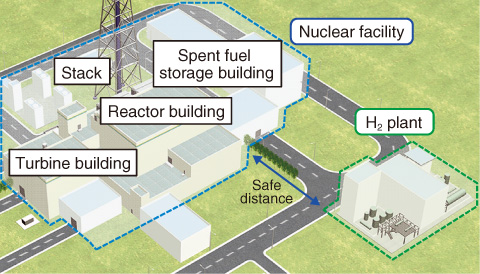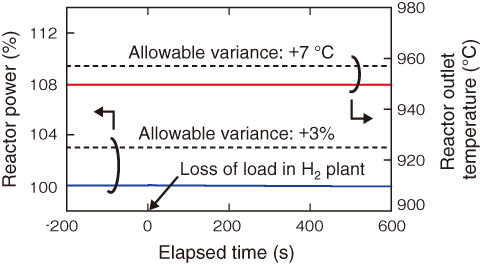
Fig.9-3 Conceptual layout of nuclear facility and H2 plant

Fig.9-4 Reactor transient response during loss of load in H2 plant
Toward the realization of hydrogen production using heat from a high-temperature gas-cooled reactor (HTGR), it is necessary to ensure the safety of the nuclear facility against postulated events initiating in the hydrogen production plant (H2 plant) and to construct the H2 plant under non-nuclear regulations upon user request. The present study focuses on a H2 plant using the thermochemical water splitting iodine-sulfur (IS) process and investigates the safety design criteria, which consist of the requirements for constructing hydrogen production plants under conventional chemical plant regulations as well as the requirements for collocation of a nuclear facility and a hydrogen production plant. In addition, design considerations to meet the criteria are suggested.
The design considerations of the nuclear facility are identified as the assurance of a safe distance between the nuclear facility and H2 plant, the installation of isolation valves against leakage of combustible gas; and early detection, the assurance of a safe distance between the nuclear facility and H2 plant against hazardous chemical leakage (Fig.9-3).
The mitigation of fission product migration from the reactor to the H2 plant and the assurance of continuous reactor operation against abnormal conditions in the H2 plant are identified as the requirements for constructing the H2 plant under conventional chemical plant regulations. In addition, the assurance of sufficient capacity for helium purification systems and the installation of a cooling system downstream of the H2 plant are suggested as design considerations to meet the requirements.
The technical feasibility of the suggested design considerations is evaluated for the HTTR-IS system, an HTGR hydrogen production system coupling the HTTR and a H2 plant using the IS process. The results showed that a safe distance of 40 m, determined by the chemical plant regulations against fire and explosion of combustible gas, can be ensured. In addition, the toxicity limit issued by the United States National Institute for Occupational Safety and Health against leakage of hazardous chemicals can be satisfied. Furthermore, the results demonstrated the feasibility of H2 plant construction under non-nuclear regulations by showing that the tritium concentration in the H2 plant can be maintained below the regulation limit, and normal reactor operation can be achieved during abnormal conditions in the H2 plant (Fig.9-4).
The proposed criteria can be used for coupling not only a H2 plant but also other chemical plants such as a steam reforming plant. The adequacy of the criteria will be assessed under an outside committee. We also aim to standardize the criteria internationally under the International Atomic Energy Agency.